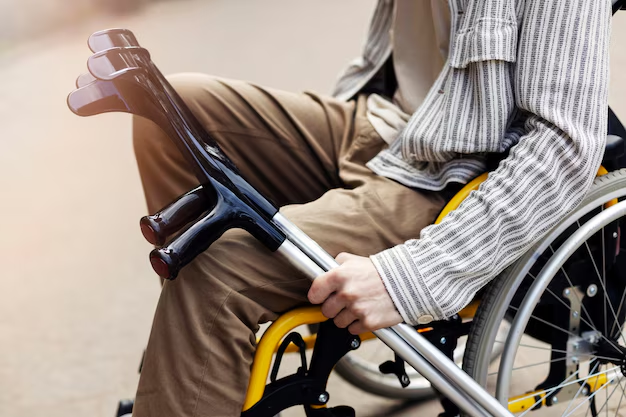Understanding Medicare Coverage for Wheelchairs: What You Need to Know
Navigating the world of healthcare coverage can often feel overwhelming, especially when it comes to understanding what specific medical equipment is covered under your plan. Are wheelchairs covered by Medicare? This question is common among seniors and those with mobility issues, and the answer can have a significant impact on improving daily life for those who rely on mobility aids.
Medicare Part B and Wheelchair Coverage
Medicare Part B, which covers outpatient care, also includes certain forms of Durable Medical Equipment (DME). Wheelchairs fall under this category, as they are vital for individuals who have disabilities or serious injuries that limit their ability to walk.
For your wheelchair to be covered by Medicare Part B, two main criteria must be met:
Medical Necessity: A doctor must provide documentation that a wheelchair is medically necessary. This typically involves a written order stating why other mobility aids such as canes or walkers are insufficient.
Medicare-Approved Supplier: The wheelchair must be purchased from a supplier that is approved by Medicare. Working with these suppliers ensures that the equipment meets certain standards and is covered by your plan.
Medicare typically covers 80% of the costs associated with wheelchairs after the deductible is met, while beneficiaries would be responsible for the remaining 20%. It’s important to be prepared for these out-of-pocket expenses, especially if you are opting for more advanced or custom wheelchair models.
Financial Assistance and Supplementary Support
Even with Medicare covering a portion of wheelchair costs, financial constraints can still pose challenges. Thankfully, several assistance programs and financial aid options are available to help ease the burden.
Government Aid Programs
Medicaid: If eligible, Medicaid can cover additional costs that Medicare does not, including copayments and premiums. Each state offers different programs, so checking your state's specific guidelines is crucial.
Veterans Affairs (VA): Veterans may qualify for assistance through the VA, covering medical equipment or providing replacements for existing wheelchairs.
Other Financial Solutions
Supplemental Insurance Plans: Consider acquiring a Medigap policy, which can help cover out-of-pocket costs not covered by Medicare. These plans vary, but can bridge the gap between what Medicare pays and what you owe.
Credit Solutions: Financing options, like medical credit cards or personal loans, can offer flexibility in managing large healthcare expenses.
Charitable Organizations: Numerous nonprofit organizations and charities provide financial assistance or direct grants specifically for purchasing or leasing necessary medical equipment.
Maximizing Your Resources
Aside from government and financial aid, there are community resources designed to support educational and financial literacy, arming you with the knowledge needed to effectively manage medical and living expenses.
In conclusion, while Medicare does offer coverage for wheelchairs, understanding the specifics and navigating the additional costs can feel daunting. Awareness of available resources and financial assistance programs can ensure that you or your loved ones can sustain a higher quality of life without undue financial strain.
Financial Assistance and Educational Resources
- 🦽 Medicaid: State-specific assistance for low-income families
- 📜 Medigap Policies: Supplemental Medicare policies
- 🎖️ Veterans Affairs (VA): Support for military veterans
- 💳 Medical Credit Solutions: Credit cards or loans for medical expenses
- 🤝 Charitable Organizations: Direct grants for mobility aids
- 🎓 Educational Seminars: Access to financial literacy programs
Empower yourself with these resources and take proactive steps to a more stable financial future while ensuring continued mobility and independence.

Related Topics
- a Medical Provider That Accepts Medicare Assignment Must
- a Medical Provider That Accepts Medicare Assignment Must Quizlet
- a Medicare Patient Received Treatment That Isn't Covered By Medicare
- a Medicare Patient Receives Treatment That Isn't Covered By Medicare
- a Medicare Supplement Basic Benefit Is Quizlet
- a Medicare Supplement Companies
- a Medicare Supplement Policy Is Quizlet
- a Medicare Supplement Policy Must Not Contain Benefits Which
- a Patient Received Treatment In August Medicare
- Am I Eligible For Medicare